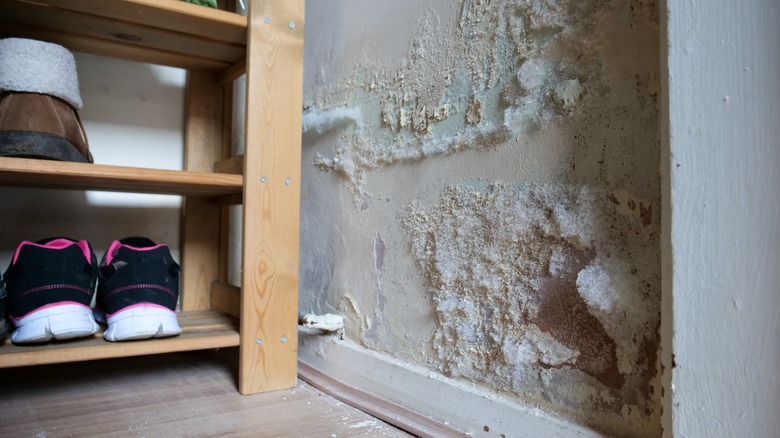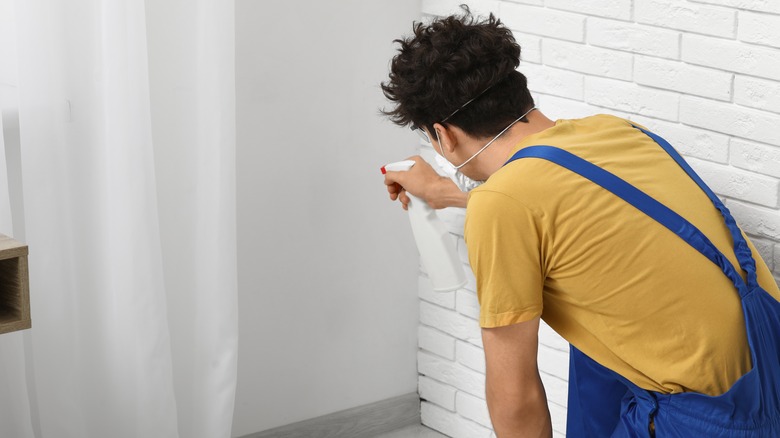Here's What Could Be Causing The White Mold Around Your Home
You probably already know that mold is a homeowner's nightmare, and if so, you could be familiar with how to identify mold. It often presents as black fuzzy little spores, but it actually comes in many colors, including white. White mold isn't any one strain of mold, and may be a sign of Aspergillus, Cladosporium, and Penicillium in your home, all of which are common mold species. But like mold of any color, white mold is the result of two things: moist conditions and an abundant food supply.
White mold can start to spread on any walls with excess moisture and continues to grow as it feeds off of cellulose, a naturally occurring substance that can be found in wood and drywall. Wondering how your walls became harbors for white mold? Walls can become excessively moist after flooding, a pipe leak, or if a home doesn't have proper ventilation in a humid environment — like a bathroom that doesn't have an extractor fan, for instance. Although white mold may not be as common as other colors of mold, it is just like black mold in that it can severely damage your home if left untreated, and poses severe health risks for you and your family. Here's how to deal with white mold in your home.
Dealing with white mold in the home
First, be sure that you're tackling white mold and not something like a salt mineral deposit. Spray the area with plain water, and watch what happens to the growth. If it stays intact, you likely have white mold, but if it dissolves even slightly, you're dealing with something else. You should also know the difference between white mold and mildew. White mildew can appear on houseplants, but doesn't spread or damage other materials, such as wood and drywall.
If you've determined you have white mold, there are a few things you can do to treat it yourself if you've caught it early enough. Be sure to have proper ventilation through an open window or working fan when cleaning mold. You should also wear some protective gear, such as a face mask and gloves, to prevent skin contact with the mold or inhaling its spores as you disturb it.
One of the easiest ways to clean mold from porous surfaces like wood is to use baking soda. In a spray bottle, mix baking soda with water until the baking soda is dissolved, then spray the mold and nearby area in case the spores have spread but aren't yet visible. Then, using a cloth or scrub brush, work the solution into the moldy area and wipe it away. Baking soda can do a decent job of removing the mold, but you may want to hit it with some extra disinfecting power. Bleach is ideal for non-porous surfaces, while vinegar works on porous materials like carpet and wood.

